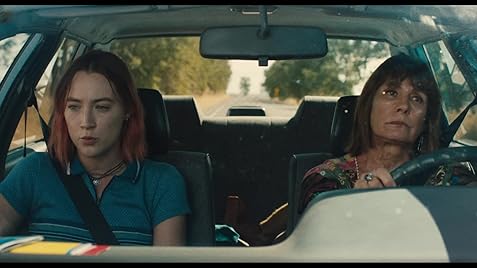Probably by now you’ve heard of Lady Bird and how it’s breaking records for rave reviews. Then, I suppose the question you’re thinking is if this is going to be another rave review. The answer is, well, it’s complicated.
Let me begin by saying Lady Bird is a good movie and it’s worth seeing. You might not be blown away by it, but one could hardly watch it and think it poorly done. Between the characters, the plot, the cinematography, there are hardly any gaps or holes to slip critiques into. The film is incredibly well-done, as everybody else by this time has noted. It is also a part of a collective style, or perhaps trend, one that makes me question the role of art and film.
Lady Bird is, without a doubt, incredibly real. From dialogue that feels like actual teenagers recorded their conversations, to characters who were flawed and unlikable and yet still likable because people are always both, the movie was like watching, not a documentary (because there is always the awareness of the observer in those) but as if someone had supplanted your memories with their own. It is like watching someone else’s life, with both the strangeness of another person and the familiarity of reality.

In this sense, the movie is reminiscent of last year’s Manchester by the Sea. Though the films feature wildly different subject matter, there is that same sense of the real embedded in both films, this unshakable unease of things hitting too close to home. What I am questioning is the worth of this real in art, particularly film. What draws us (myself included) to these works that are doing their best to mime and play act the real world without much other kinds of artfulness or fantasy or fiction slipping through? And are they worthwhile?
I’m a big believer in art-with-a-purpose. Film should entertain us, yes, but it should also be saying something (at least good film should). So when I watch a hyper-realistic film like Lady Bird, I have to wonder what it is attempting to state, because the downfall of hyper-realism is that since life doesn’t come with pithys or messages or subtext, in order to stay true to what is real you must avoid a message, you must strip your film of such extra things, you must only represent and not show us possibilities beyond the real. There is something worthwhile in representation, in showing us precisely what it is like to live another life, but there is also something lacking when there is only representation. These movies are, in some senses, like hyper-realistic pencil drawings: they are impressive on a technical level, they show the real world through an alternative medium, but they lack the spark that makes art, the imaginative element that moves us from what is to what could be.

Still, I highly recommend Lady Bird. Like I said, it is impressive and this review is, in part, playing Devil’s advocate and exploring what we lose when films become too real–it ignores entirely (and intentionally) what we might gain.
Student tickets are $8 at the Michigan Theater and the movie will continue to play for several weeks.

